In the last few years, I have reviewed more lenses than you could possibly imagine.
My photography students are always asking which lens is right for them, so I spend a significant amount of time looking for lenses that offer superior quality at lower price points.
These are the best inexpensive Canon lenses I could find.
There are many others that I'm sure people will mention in the comments, but only 6 could make the cut for this list.
These lenses are the ones that I recommend very often on the Improve Photography Lens Finder.
I spent thousands of dollars and over a year developing the lens finder.
It basically asks you 5 questions about what lens you want, and then recommends the perfect lens for your situation.
I must mention from the outset that I use “the triad” of lenses (explained later), so I'm comparing the lenses in this list against the highest quality lenses in the Canon system at any price.
In all instances I have found these lenses to perform extremely well with Canon L lenses, but for WAY less money.
This is the good stuff–even when compared to the highest quality lenses money can buy.
Also, I must issue a disclaimer that the word “inexpensive” means different things to different people.
I am using the word “inexpensive” to compare these lenses to the top performing Canon L lenses that are generally priced around $2,000.
Tamron 28-75mm f/2.8 Lens
About a year ago, I had the opportunity to spend some time with a rep from Tamron and spend the day shooting just about all of the lenses in the Tamron lineup.
To be honest, I was not thrilled with most of them.
Most were “acceptable” and one lens was jokingly awful.
I finally couldn't take it anymore and I asked the rep to show me just the one best lens in the Tamron lineup.
He reached for the Tamron 28-75mm f/2.8. Skeptically, I played with it and shot with it for a while.
I was blown away at the quality from this lens.
I found this lens to be extremely close to the sharpness of the $2,400 Canon 24-70mm, and it adds one really impressive feature that the Canon doesn't–it's also a nice macro lens.
For me as a professional photographer, I would definitely take a long hard look at the Tamron 28-75mm before shelling out MORE THAN FOUR TIMES the cost to buy the Canon 24-70.
You can check the current price of this lens on Amazon.
You can also check KEH Camera to see if you can save some money on a REALLY high quality used one.
KEH Camera also has REALLY good financing option!
Canon 70-200mm f/4
Before you get lost in your excitement over the price of this Canon lens, notice that the f/stop only goes down to f/4 instead of the much-desired f/2.8 version of this lens (which costs about $2,500 dollars!).
To have an f/4 maximum aperture is not entirely negative; in fact, it gives you a lighter lens than the f/2.8 version with nearly equal optical quality.
The fast aperture will give you great results all the way through the lens to the edge of the photo.
In fact, many professional photographers who have used the 70-200mm f/2.8 for years are now switching over to this f/4 version to save some money and to lighten their load.
If you haven't used professional lenses before, you may not appreciate just how heavy they are, so saving weight by choosing this f/4 lens is a significant benefit over the $2,500 f/2.8 version of this lens.
This is probably the most popular lens for photographers buying their first professional-grade “L” lens (Canon's marker for their professional quality lenses).
There are two 70-200mm f/4 lenses available for the Canon system. Both are “L” glass, but one has image stabilization and one doesn't.
The image stabilized version is significantly more expensive, but the optical quality is similar between the two versions.
Click here to check the price of the less expensive non-IS version on Amazon, or else you can click here for the much more expensive version with IS on Amazon
You can also check KEH Camera to see if you can save some money on a REALLY high quality used one:
Canon 85mm f/1.8 – $335
If I could pick only one prime lens for portrait photography, it would be the 85mm.
There is also an 85mm f/1.2 lens available for the Canon system, but this lens is nearly as good for much less money.
The 85mm focal range allows you to maintain a bit more distance between you and your client.
Also, the bokeh in your backgrounds just look silky smooth.
You will be amazed at the sustained image quality all the way to the edge of your photos, even with finer detail.
When shooting portraits with this 85mm lens, full-frame shooters will see a slight softness around the edges… but nothing you can’t live with.
Check the price of this lens on Amazon.
You can also check KEH Camera to see if you can save some money on a REALLY high quality used one.
Canon 100mm f/2
The Canon 100mm f/2 is the twin sister of the 85mm f/1.8 lens mentioned previously, but this one was born 15mm later.
In terms of build quality, value, and sharpness, these lenses are both about equal.
So now the question–which one do I pick?!?!? My rule is this: if you EVER shoot indoor sports, you want the 100mm f/2.
It's just about as fast and sometimes the extra 15mm can make a real difference for indoor sports.
This is a great option for indoor sports because it is ridiculously fast and is a good focal length for “close” sports where you can get right up to the sidelines like swimming, wrestling, tennis, some basketball games, etc.
Aside from indoor sports, this lens is fantastic for portraits as well. If you are shooting exclusively portraits, it is difficult to choose between the 85 and the 100.
The features on the face become flatter and more flatterING when shooting with a longer focal length, but photos shot with a slightly shorter focal length have a more intimate feel.
In general, I'd recommend the 100mm for full frame cameras (5D Mark III or 6D, for example) and the 85mm f/1.8 for crop sensor portraits (like the Canon Rebels, 70d, etc.)
Check current prices for the Canon 100mm f/2 on Amazon.
You can also check KEH Camera to see if you can save some money on a REALLY high quality used one.
Canon 100mm f/2.8 MACRO Lens
Things just got complicated. You decided between the 85mm f/1.8 and the 100mm f/2, but now there is a third option with a similar fast aperture and similar focal length.
This one, however, adds macro capabilities which means it can focus very close to the camera.
But this lens is not only for macro photography.
Given it's sharpness, fast aperture, and convenient focal length, it also makes a nice portrait lens.
This lens is the little brother of the Canon 100mm f/2.8 L lens, which is slightly sharper and has better build quality.
But just because there is a more expensive version of this lens does not take away from the value of this excellent and sharp portrait and macro lens.
If you want to do serious macro photography on a budget, then this lens is an excellent option.
If however, you really want to do serious portrait photography and it would just be handy to do macro as well, I'd advise you to pick the 100mm f/2 (mentioned above) and simply buy this close focus filter on Amazon to add on the lens when you want to occasionally do macro work.
Check the current price of the Canon 100mm macro on Amazon.
You can also check KEH Camera to see if you can save some money on a REALLY high quality used one.
Canon 50mm f/1.8 II
Every photographer should own a 50mm f/1.8 lens as your first upgrade from the kit lens that came with your camera.
This lens is significantly sharper than the kit lens, has an extremely fast aperture for blurry backgrounds and shooting in low light, and the price is unbelievably good.
This little guy will just simply astound you at the great quality and stunning images you will get.
At the low price, it’s nearly a no-brainer to add this lens to your lineup.
This lens maintains great quality all the way to the edge at lower f/stop values.
This is a prime lens, so you will have to physically move to zoom in and out and potentially get in your client’s face.
I used the “nifty fifty” (as photographers often call this lens) for several years before investing in uber-expensive pro lenses.
Looking back, this lens is only a tiny bit less sharp than pro lenses, but for me the real benefit of the more expensive lenses is the zoom.
Many photographers love shooting prime lenses such as this, but most of the time I prefer a zoom.
Check the current price of the Canon 50mm f/1.8 on Amazon.
You can also check KEH Camera to see if you can save some money on a REALLY high quality used one.
Two more lenses that ALMOST made the list
There are two more lenses that I was extremely tempted to put on this list but resisted because they are a bit too expensive to be called “inexpensive” even though they are much less than other lenses of similar quality.
They are the Canon 24-105mm f/4 lens and the Canon 200mm f/2.8L.
The Canon 24-105 is probably the best “walk around” lens in the Canon lens lineup.
It is used by many professional photographers as a street photography and “chase the kids” lens.
It has a reasonably fast aperture, a convenient focal length, and is sharp as a tack.
I just wish it came down in price a couple hundred bucks.
The Canon 200mm f/2.8 L is a marvel of engineering.
For the price, you get a sharp, fast prime lens that would be terrific for shooting indoor sports, longer portraits on a full frame camera, etc.
Highly recommended though if I were spending that much I'd have to figure out how to justify purchasing the 200mm f/2.8 instead of the 70-200mm f/4 for even less money.
One side note…
Just about every professional photographer I know owns the same three Canon lenses: The 16-35mm f/2.8, Canon 24-70mm f/2.8, and the Canon 70-200mm f/2.8.
Photographers often refer to these lenses as “The triad,” and the same lens names make up the Nikon triad.
I certainly wouldn't agree that you need these three Canon lenses to be a professional photographer.
But I do want to bring out the point that professionals rely on this triad because they are all nearly flawless, fast lenses that cover the entire range of focal length that most photographers need for general photography work.
I want to re-iterate that I do not think the triad of lenses is necessary for photographers to own in order to produce top notch photography.
That's the whole point of this article!
But if you plan to shoot your camera system for many years and you are in a position to invest heavily on lenses, one advantage to these lenses is they generally last a decade or longer with excellent results.
I know many photographers who purchased a 70-200mm seven years ago and who don't feel the need to upgrade to the newer versions because their original is still so good.
Quite frankly, the difference between most of the lenses on this list and the more expensive competitors to these lenses is extremely minor.
I wouldn't put too much stock in what the camera manufacturers want you to think you need to take a nice sharp photo.
Disclaimer: Improve Photography is a participant in the Amazon Services LLC Associates Program among other affiliate programs, an affiliate advertising program designed to provide a means for sites to earn advertising fees by advertising and linking to Amazon.com and other websites.

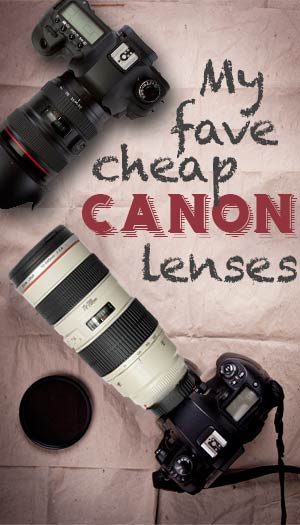





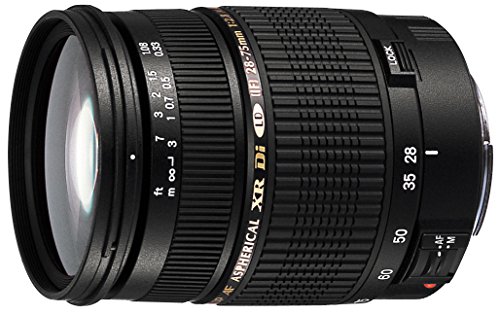
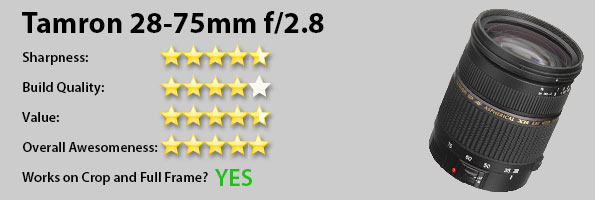
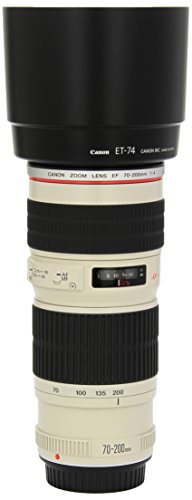
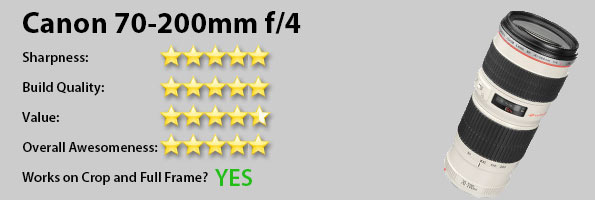

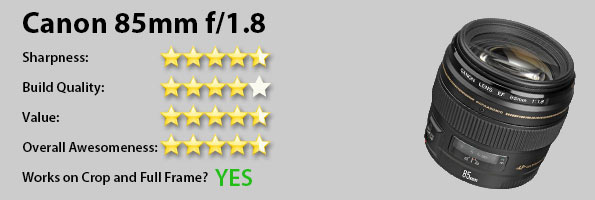

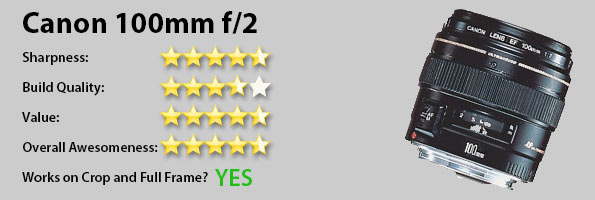

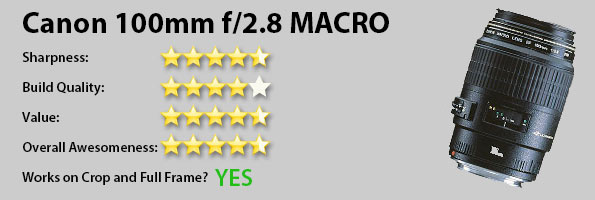


Thank you for the recommendations–those both sound like lenses well worth looking into, but I’m afraid my next purchase must be something with a reach of at least 300mm. I’ve been looking at Sigma and Tamron, but reviews seem to be very mixed. I’m happy to invest in one of those brands, but I want to be sure I’m getting quality photos. I’m hoping for something with range but that is still, if possible, a comfortable size/weight to travel with, as I do a lot of lightweight traveling and trekking.
thanks a lot for the list ! my canon 60D surely need em !
Among other reasons, I like the Tamron 24-70mm over Tamron’s 28-75mm because the auto focus is faster, the manual focus is seems smoother, its weather sealed, and the VC is amazing. However, It cost more $$$ and its a little heavier. Vignetting is still a problem.
Mr. Harmer,
Great, informative article. Couldn’t find an email/contact page, but I’m hoping you could answer a question.
I’ve been saving for a Canon 28-300 Zoom Wide Angle-Telephoto EF 28-300mm f/3.5-5.6L IS USM and figure it will be a solid, high quality all around lens to up my game a bit. I shoot portraits, but also animals, wildlife, eagles on the fly, etc. I’m wondering if you’ve used this lens, and what your opinion if of it’s quality level- otherwise, I’ll probably go for two lenses. The 85mm you recommend and possibly either wait around for the Tamron all-in-one coming out this year or the recently released 150-600mm, which has been getting good reviews (though it’s hard to know who to trust as unbiased).
I love the look of my nifty fifty, and have been thinking about another quality fixed lens, but that 28-300 just seems to wrap up a lot of things I’d like in a lens. Any thoughts?
Thanks for your time, and I’ll be spending more time on your site now that it’s come to my attention.
Cheers,
Mark
I am looking for an affordable wide angle lens. Any suggestions?
I’ve used the Tamron 28-75mm and I really didn’t like the wide open performance the lens. I went through 3 copies and they all perform relatively the same. Decently sharp center horrible corners.
You have a LOT of amazing photography resources that have really been helping me on my journey. Thank you so much!
And your 6 favorite Nikon lenses are….
If you shoot on an APS sized Canon sensor then I would suggest the 10-22 EF-S lens. Although it is not extremely fast (3.5-4.5) it produces very sharp images much like the Canon 16-35 2.8 on a FF camera. I own one and am very happy with it although I am thinking of going to FF (5D series) and this one will not work with the full frame cameras. Hope this helps.
How would you compare the 50mm f/1.8 to the 50mm f/1.4?
I must first make excuses for my ignorance, being a relative beginner. I have heard that a good focal length for portraits is 100mm. Now I’m not using a full frame lens & my crop factor is 1.6,, so if I want this ‘ideal’ focal length of 100mm surely I would have to use a 60mm lens which would give me an effective focal length of 96mm. Your recommendation of 10mm would give me an EFL of 160mm, theoretically, not a good focal length for portraits.
Or am I missing something obvious?
Larry
y
Hey Larry,
100mm is not actually required for portrait photography. You can actually shoot a portrait with any lens you have. But in fact, longer lenses make better portrait lenses. There are 2 reasons for this. One, you don’t want to be in your subjects face. A longer lens lets you step back and makes your subject more comfortable. Two, a short or wide angle lens will make your subjects face look very fat. Some people shoot portraits with a 200mm lens. It all depends on if you can move far enough away from your subject (your studio size for example). So don’t be limited by the 100mm lens recommendation.
Also see the Sigma 18-35mm 2.8 for cropped sensors.
I was given a third-hand canon 300D with the 18-55 kit lens last year as my first DSLR. I’ve since purchased the 50mm f/1.8 which now never leaves my camera. I am passionate (my partner would say obsessive) about photography and have received a lot of positive feedback about my images. I’ve decided that I want to invest in myself with a view to becoming a professional specialising in family photo shoots, newborns and, eventually, weddings. I’ve been saving like crazy and have around $4000 – $4500 to spend. I’m now confused as to what to buy. I’m happy to buy 2nd hand where I can. I’m thinking I’ll purchase the 6D (although 2nd hand mark IIs are cheaper) – I’ve also had it suggested to maybe purchase the 7d to save some cash that can be invested in lenses and invest in a full frame later. Then there’s the lens. Currently I am mostly shooting my kids, but I also shoot bands and nature. I would say that using the 50mm (on my 300D) has made me work hard on my composition, but I have often felt frustrated at missing the shot – either indoors/close to the stage where I couldn’t get wide enough or outdoors/from my theatre seat where I didn’t have enough reach. I was drawn to the 70-200 to give me that extra for capturing little moments with my kids as well as birds/bats etc in the trees and musos on stage, but have frequently read/been told that the 24-70 would be a better first lens. I’ve also had it suggested that the 85/1.2 would be better to start with as I’m going into portraiture, but I do have the 50 and since it shoots like an 85 on the crop body it seems a bit unexciting to still have the same focal length as I’ve been using all this time. I’m really confused. I’m not ready to set up a business yet, but I want equipment that will go the distance for me. What do you think?
I know this is an older comment, but I thought I would give my two cents.
I have the 6D and I am in love with it. For the price, it really can’t be beat.
Full frame, full sized body with advanced technical features like WiFi and GPS (it’s really nice being able to use an iPad connected to WiFi to proof shots or show them to clients for feedback).
As far as a recommended starter lens, if I were you, I would go with the 24-105mm f/4 L lens. It’s a great inexpensive walk around lens that covers a large majority of the focal lengths you might use for most applications. Sure it’s f/4, but the majority of work I shoot is shot between f5.6 and f8 anyway for maximum sharpness.
I’ve found that the 6D does pretty well in high ISO situations and the if the environment you’re shooting in really is too dark you could always use a flash.
If you can swing it, I would also recommend the 70-200 L in one of its incarnations for telephoto applications especially if you’re shooting action sports or wildlife.
Once you shoot with L lenses for awhile and go back to non-L (with the exception of most of the Canon primes) you will understand why they cost so much and also why they are worth it. Hope this helps!
Good luck!
I’d say it depends on what body you choose, either crop or full-frame. I shoot with a 60D but my budget was nowhere near as high as yours, I’d say WAIT until September for the announcement of the 7D II. That’ll be a game changer.
If you decide on a crop, my favourite lens to use is the Canon 17-55mm f/2.8. It’s the best walk-around tele lens for crop (it equals out to 28-88mm on crop, so essentially a glorified 24-70. Speaking of the 24-70, you could either get that or a 24-105 for a full-frame. If you think you’d need some extra reach, go for the 24-105.
Hope that helps!
what about the Canon EF 100-400mm f/4.5-5.6L IS for some good telephoto zoom ?
Because if you read the article including the last bit where the author says why he didn’t add other lenses, you would know the answer to that.
For the 6D vs 7D, they both have very similar qualities, except for the sensor. If you are going to ever be needing to use and ISO of 3200 or greater, and publishing the photo for web or print, you need the 6D. But because of the crop sensor, all the lenses MM size are really (xx)mm *1.6, making the 7D hard for good wide angle shots unless you get the EF-S lens lineup. The 6D is overall a much better camera.
For Lenses:
-Canon 50mm f/2.5 Compact Macro, I own and love this lens, it does macro shots beautifully. $~400
-Tamron 70-300 f/4-5.6 SP VC USM, This lens is my favorite lens. It has the same characteristics in image quality of the 70-200 f/4, the only disadvantage being the varying aperture. Though, this lenses VC (Vibration Compensation) Is the best EVER. You can take a steady shot at f/8 ISO 100, 1/40 of a second at 300mm. It is wonderful. The price is even better hovering around $~450
-Canon 17-40 f/4L. The best wide angle in my opinion. This lens gives you very wide angle to very normal. This works very well, and is very sharp. $~800
-Canon 8-15mm f/4L Fisheye. – This lens is the least needed out of the bunch, as it is very wide angle, and very distorting. This can take very “fun” shots and sees the world in a completely different way. $~1300
If you get all the lenses above which will serve you very well for wedding, photoshoots, and the like. The cost for these lenses with the 6D (~1600 Body Only) would be around $4500
Later in the future you could get:
Canon 24-70 f/2.8L. The best every-shot kind of lens. This takes beautiful photos and does its range well, working from 24mm to 70mm. You can go from normal to wide angle to slightly telephoto. $~2000
Or Canon 24-105
Good Luck!
I just started photography and bought the Canon Rebel t5. Currently I’m working on talking pictures for Realtors listings. Please can someone recommend which lense would be best for landscape and a wider angle? Thank you so much for your thoughts.
The Canon 10-22mm EF-S zoom is a great lens for interior shots and some wide angle landscape applications. However a prime, fixed focal length such as 20mm would be better for landscape images where better sharpness and less distortion are important.
I have a Canon crop sensor camera. Would the recommended 85 mm 1.8 lens be useful if I already have the 50 mm 1.8?
I’m a dedicated photo enthusiast and I don’t shoot professionally.
@Erik, I am the hobbyist editor here at improvephotography.com and I hate this response as we give it far too often, but it really applies here – it depends. Meaning it depends entirely on what you want to shoot. If you want to be able to shoot portraits or photos indoors then the 85mm lens will likely be far too tight (too zoomed in) and not as useful. The 50mm lens on a crop is nearly too tight for indoors. The 85mm would be useful for indoor concerts, dances, plays, or other performances where you aren’t too far away – say in a school gym or smaller sized venue. It probably wouldn’t be quite enough reach for a football game, but if you are in the stands of a basketball game for high school then the 85mm would work really well. Could also be a good lens for doing landscape panorama shots, stitching together multiple shots in post.
Personally, I am also a Canon shooter who isn’t doing this professionally, and the 85mm f/1.8 is not currently on my wish list. Although it doesn’t go to 85mm, in a similar price range I would choose the Tamron AF 28-75mm f/2.8 SP XR Di LD Aspherical (IF). It is still a fast lens at f/2.8 throughout the zoom, but the zoom makes it a far more functional lens.
I could do a better job recommending a lens if I knew what it is you want to do with your photography.
Hi all
I have the chance to buy an old EF 70-210 3,5/4,5 USM and i dont have any info or feedback.
Its very very cheap.
What do tou think about it?
I recently bought a 2nd hand 60D, and a new nifty fifty and 2nd hand Canon 15-85 USM. How would the latter compare to thus list? I thought this would be an ideal starting walk around lens.
BTW, I’m not completely satisfied with the sharpness of both lenses on my body. I’m thinking my body needs calibration. Anybody else had this?
@Stijn,
Until very recently the 60D was the body I primarily shot with. Great camera that is very capable. If you aren’t getting sharp pictures using the Canon 50mm f/1.8 EF I suggest that you take a look at Jim’s “10 tips for sharper photos” and “7 tips for getting tack sharp photos every time” articles.
Most likely there is something you need to change in how you take the photos rather than there being a problem with your camera or your lenses. There certainly CAN be an issue there, but it is relatively rare.